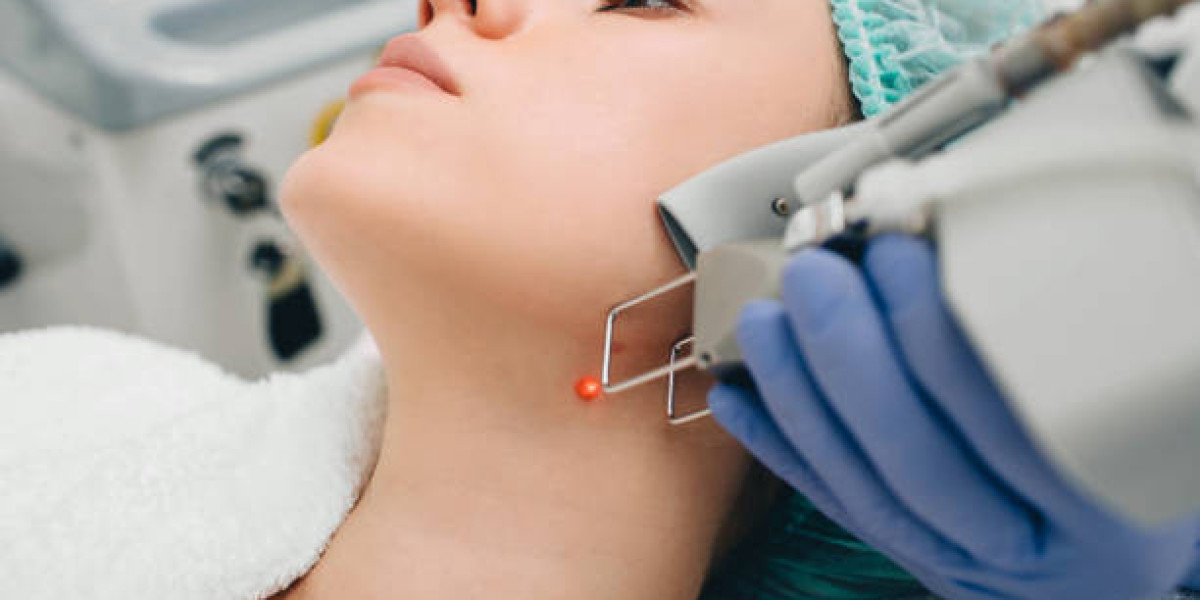If you're considering mole removal in Islamabad, a consultation with a qualified dermatologist is the first step toward achieving smooth and healthy skin. Whether you're seeking removal for cosmetic reasons or due to concerns about skin health, preparing for your consultation can help ensure a smooth process. Proper preparation will allow you to gather all the necessary information about the procedure, your options, and any potential risks. Here’s how to prepare for your mole removal consultation:
1. Understand Your Reason for Removal:
Before your consultation, take some time to reflect on why you want the mole removed. Moles are typically benign, but some people choose to have them removed for cosmetic reasons or because of changes in appearance or size. If you have noticed any changes in your mole, such as growth, bleeding, or irregular borders, it may be a good idea to consult a dermatologist for evaluation. In some cases, removing a mole could be recommended to prevent skin cancer or because it’s causing irritation.
Tip: Write down any changes you’ve noticed in the mole to help communicate this clearly with your dermatologist.
2. Review Your Medical History:
Your medical history plays a crucial role in determining the best approach for mole removal. Certain factors like a history of skin cancer, allergies, or skin conditions can impact the removal process. Additionally, if you've had previous mole removals, it's essential to inform your dermatologist, as it may affect your healing or scarring.
Tip: Be prepared to discuss any medications you’re currently taking or conditions you’ve experienced, such as bleeding disorders or keloid scarring.
3. Ask About the Removal Options:
Mole removal procedures vary, so it’s important to discuss the different methods available with your dermatologist. Common options include:
- Surgical Excision: The mole is cut out, and the surrounding skin is stitched back together.
- Shave Excision: The mole is shaved off at the surface level, typically leaving a small scar.
- Laser Removal: A laser is used to remove the mole, with minimal scarring and a quick recovery time.
- Cryotherapy: The mole is frozen off using liquid nitrogen.
Each method has its pros and cons, so it’s essential to ask your dermatologist which option would be best for your mole and skin type.
Tip: Ask about the expected scarring, recovery time, and any risks associated with each method.
4. Consider Your Skin Type:
Different skin types may require different treatment approaches. If you have sensitive skin or specific conditions like acne or eczema, your dermatologist may suggest a treatment method that's less likely to irritate or cause complications. Be sure to mention any skin conditions you have to help your dermatologist recommend the most suitable treatment.
Tip: If you have a darker skin tone, discuss the risks of hyperpigmentation or scarring that could affect the healing process.
5. Inquire About Costs and Insurance Coverage:
Mole removal procedures can vary in cost depending on factors such as the type of removal method, the size of the mole, and the clinic's location. If your mole is suspected to be cancerous or medically necessary to remove, your insurance may cover the procedure. However, if it’s purely for cosmetic reasons, you’ll likely need to pay out of pocket. Make sure to inquire about the cost and whether your insurance will cover part of the treatment.
Tip: Ask about any additional costs related to follow-up appointments or post-removal care.
6. Prepare Questions for Your Dermatologist:
It’s essential to be well-informed before moving forward with the mole removal procedure. Come prepared with questions for your dermatologist, such as:
- What removal method would be best for me?
- How long will the procedure take?
- Will I need stitches, and if so, when will they be removed?
- What should I expect during recovery?
- Are there any risks of infection or scarring?
Tip: Write down your questions in advance so you don’t forget any important details during your consultation.
7. Prepare for Aftercare and Recovery:
Understanding the recovery process is an essential part of mole removal. Depending on the method used, the recovery time may vary. For example, surgical excision might require stitches and a longer recovery period, while laser removal typically has a faster healing time. Ask your dermatologist about the aftercare process and how to manage any pain or swelling.
Tip: Ask about any restrictions you should follow post-procedure, such as avoiding sun exposure or applying creams.
8. Bring Photos if Needed:
If you have noticed changes in your mole over time, it may be helpful to bring along photos. Documenting the mole’s appearance will allow your dermatologist to evaluate its progression and determine if it requires immediate removal or monitoring. This can also be useful in cases where the mole has changed significantly.
Tip: If you have multiple moles you’d like to discuss, take photos of each one so you can reference them during your consultation.
Conclusion:
Preparing for a mole removal consultation is key to ensuring a smooth and successful procedure. By understanding your reason for removal, reviewing your medical history, discussing treatment options, and asking important questions, you’ll be well-equipped to make an informed decision. Don’t hesitate to voice any concerns you have about scarring, recovery, or cost. A knowledgeable and professional dermatologist will guide you through every step, making sure you feel confident in your decision for mole removal.
For more information visit Dynamic Clinic PK.
